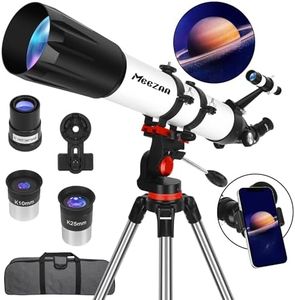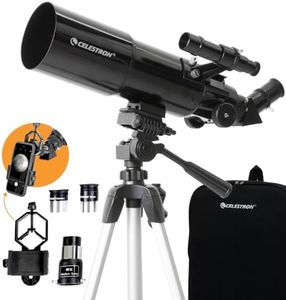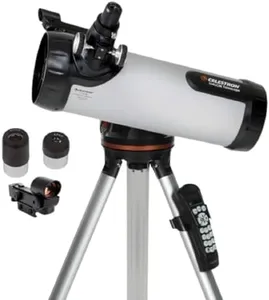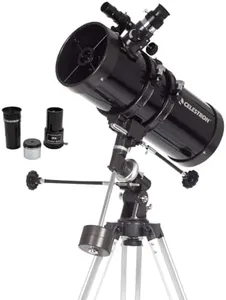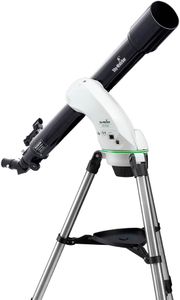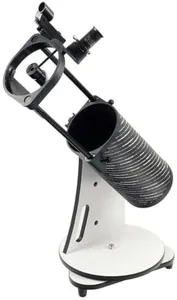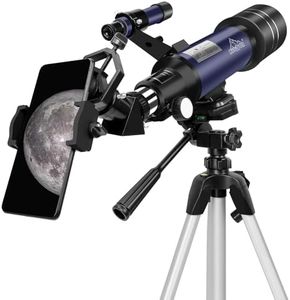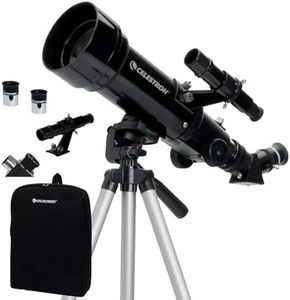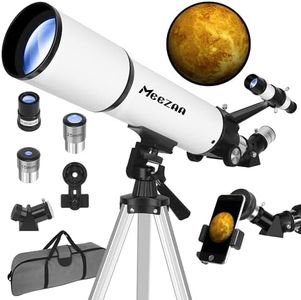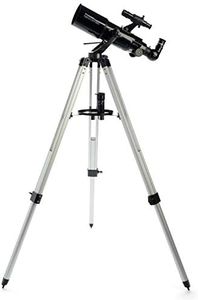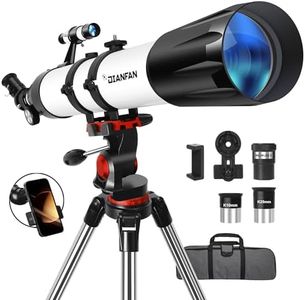We Use CookiesWe use cookies to enhance the security, performance,
functionality and for analytical and promotional activities. By continuing to browse this site you
are agreeing to our privacy policy
10 Best Telescopes For Beginners
From leading brands and best sellers available on the web.Buying Guide for the Best Telescopes For Beginners
Choosing your first telescope can be an exciting adventure. It's important to think about what you want to see—like the Moon, planets, or deep-sky objects—and where you’ll be using the telescope. Understanding the main features will help you pick something that fits your interests and is easy enough to use so you’ll enjoy your stargazing experience.ApertureAperture refers to the diameter of the telescope's main lens or mirror. This is the most important feature because it determines how much light the telescope can collect, which affects how bright and clear the images will be. Telescopes with smaller apertures (around 60-80mm) show the Moon and some planets well, but may struggle with faint, distant objects. Medium apertures (90-130mm) offer a good balance, revealing planets and some deep-sky objects with more detail. Larger apertures (over 130mm) provide even brighter and sharper views, but can be bulkier and more expensive. Beginners usually benefit from a medium-sized aperture for a mix of performance and ease of handling.
Mount TypeThe mount is what holds the telescope and allows you to move it to aim at different points in the sky. There are two main types: alt-azimuth and equatorial. Alt-azimuth mounts move up-down and left-right; they're simple, intuitive, and great for beginners. Equatorial mounts are more complex and designed to track stars as the Earth rotates—these are better for those thinking of doing astronomy as a hobby long-term or interested in astrophotography. If you want something easy that you can set up quickly, look for an alt-azimuth mount.
Focal LengthThe focal length is the distance from the main lens or mirror to the point where the image comes into focus. This spec affects the telescope's magnifying power. Shorter focal lengths (under 700mm) give wider views, which are great for scanning the sky and observing large objects like the Moon or wide star clusters. Longer focal lengths (over 900mm) offer higher magnification, which is good for getting a close-up look at planets and the Moon. Think about what you want to observe—wide views for sky scanning or higher magnification for planets—when considering focal length.
PortabilityPortability means how easy it is to carry and move your telescope. Smaller, lighter telescopes can be taken outside easily and set up quickly, making them ideal for beginners, younger users, or anyone with limited storage space. Larger telescopes offer more viewing power but may require more effort to transport and set up, which can discourage regular use. Think about where you'll use and store your telescope, and choose a size you’re comfortable handling.
Eyepieces and AccessoriesEyepieces determine the telescope's magnification and how comfortable it is to use. Most starter telescopes come with one or two standard eyepieces, but having choices lets you change your view depending on what you are observing. Accessories like a finderscope help you aim the telescope, while star charts or smartphone adapters add to your experience. For beginners, a simple kit with a couple of eyepieces and an easy-to-use finderscope is usually enough to get started and enjoy a variety of celestial sights.



